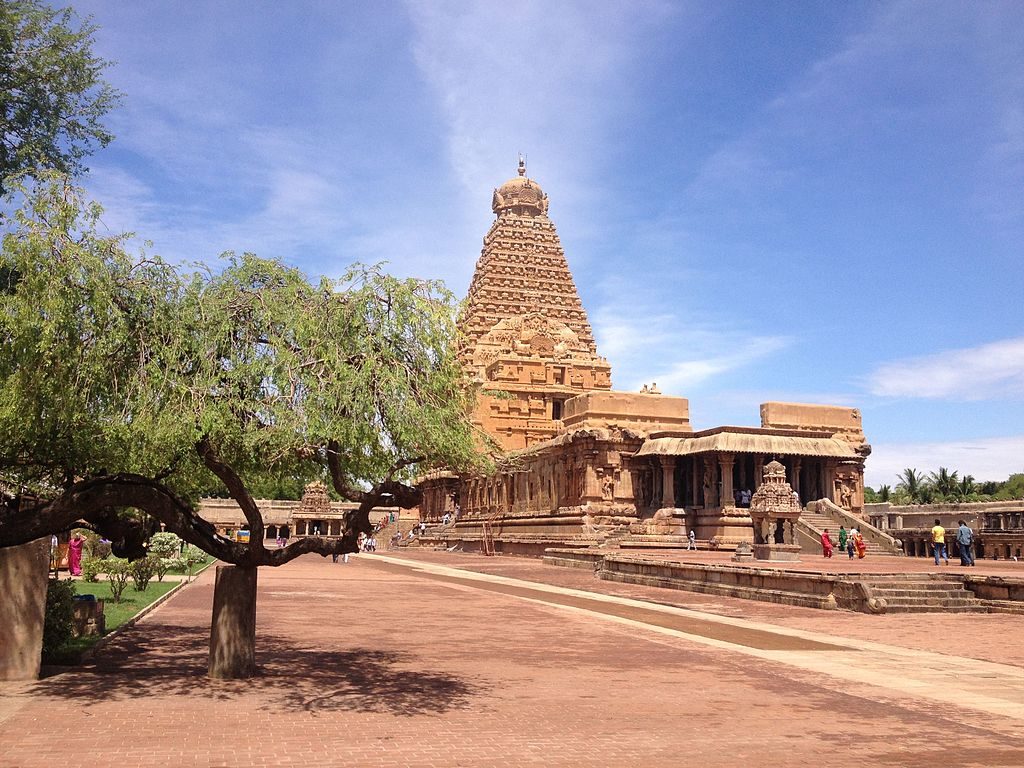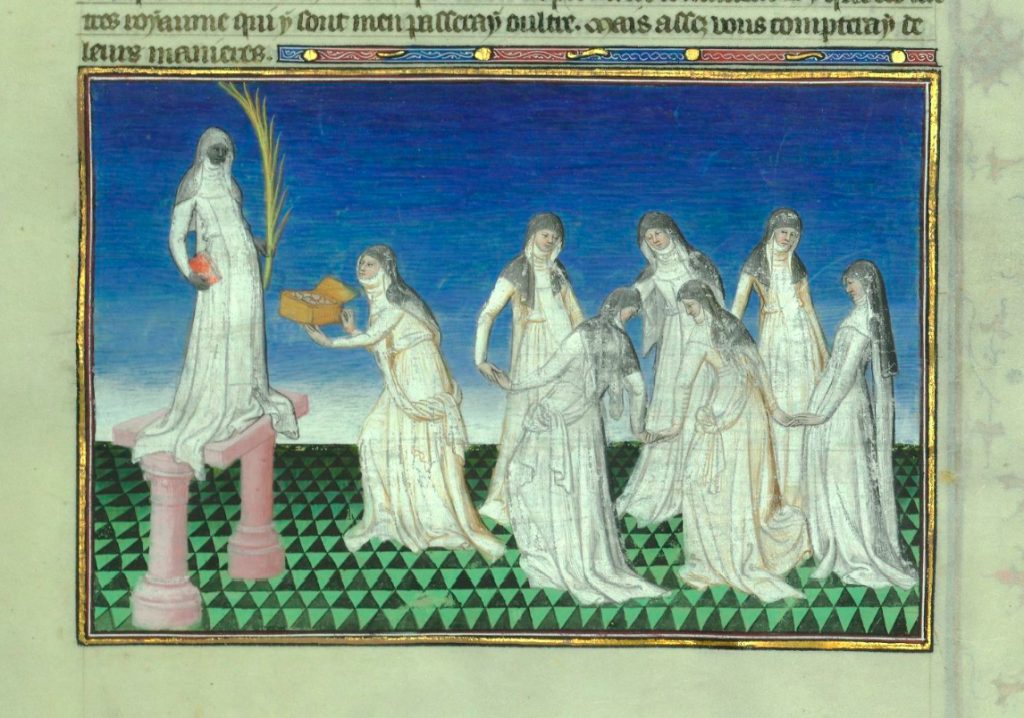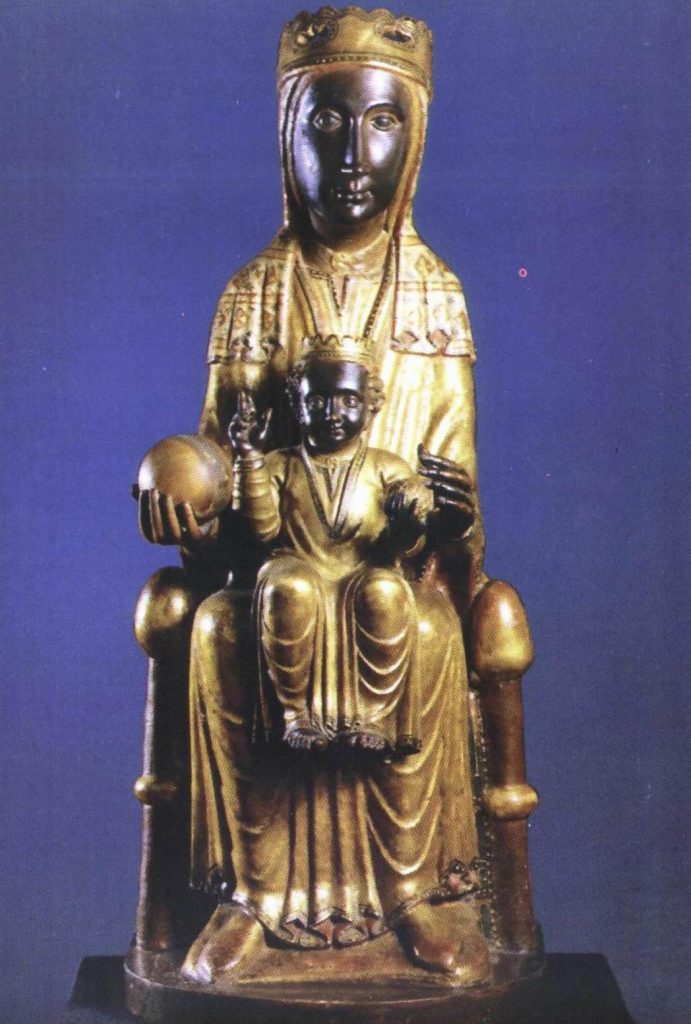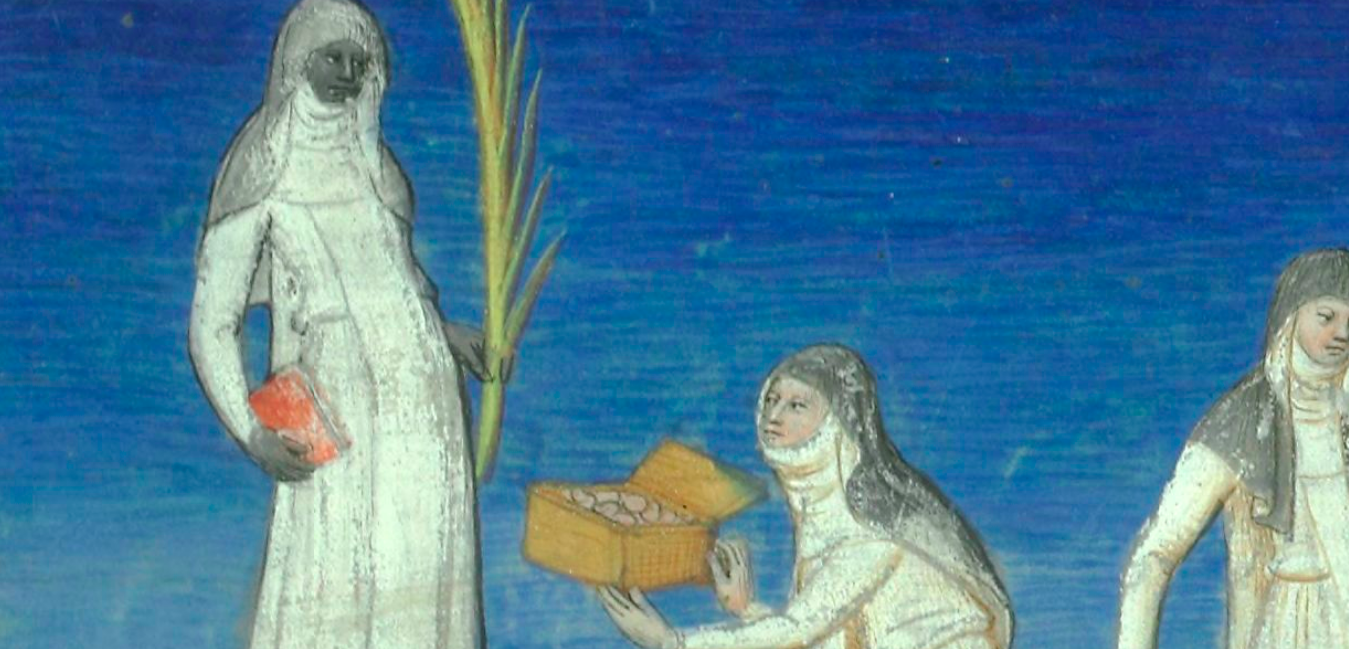In part of his famous Travels, Marco Polo discusses an area he calls Maabar: the southeastern coast region of the Indian subcontinent, modern day Tamil Nadu and Andhra Pradesh. Polo’s interest was attracted by several aspects of the cultures of this region which seemed strange to a thirteenth-century Italian: clothing styles, ritual suicide or sati, bathing and hygiene practices, and more.
One passage in particular reads:
“Let me tell you further that they have many idols in their monasteries, both male and female, and to these idols many maidens are offered in the following manner. Their mother and father offer them to certain idols, whichever they please. Once they have been offered, then whenever the monks of these idol monasteries require them to come to the monasteries to entertain the idol, they come as they are bidden; and sing and afford a lively entertainment. And there are great numbers of these maidens […]
Several times a week in every month they bring food to the idols to which they are dedicated; […s]ome of these maidens of whom I have spoken prepare tasty dishes of meat and other food and bring them to their idols in the monasteries. Then they lay the table before them, setting out the meal they have brought, and leave it for some time. Meanwhile they all sing and dance and afford the merriest sport in the world. And when they have disported themselves for as long a time as a great lord might spend in eating a meal, then they say that the spirit of the idols has eaten the substance of the food. Whereupon they take the food and eat together with great mirth and jollity. Finally they return – each to her own home. This they do until they take husbands.”
—The Travels of Marco Polo, trans. Ronald Latham
Polo goes on to describe how these “maidens” dance nude and perform some eye-wateringly acrobatic high kicks in front of statues of their god and goddess, in order to placate the god’s anger and to encourage the divine couple to copulate. The way that Polo frames the religious beliefs and practices of these people is definitely in what scholars might call an Orientalising mode: although not outright dismissive, his tone is faintly patronising and paternalistic, with the faith of these people something to be looked at and judged from the outside but not engaged with on its own terms. For example, we don’t so much as learn the names of these deities (“idols”, as Polo terms them), or get any great insight into the motivations of the worshippers.

But what particularly interests me about how Polo talks about the topic to a (mostly) Christian, European audience is some of the language he uses. In the original medieval French text, the women are described as nonain (The translator of the excerpt above, Latham, chose to translate this word into English as “maiden” but in French it more literally means “nun”), and the religious buildings in which they congregated were moister, or monasteries. Hindu worshippers in a Hindu temple become nuns in a Christian monastery. Polo reached for the terms that he knew, although they were only the vaguest of synonyms for the people and places whom he was describing. In doing so, he was was in a sense setting the stage for the later colonisation of India, long before a member of the British East India Company set foot there—presuming that the white, western, Christian experience was the default and interpreting the cultures he encountered through that prism.
Travel literature was widely popular in the later Middle Ages, and many manuscripts of Marco Polo’s book—often quite divergent—survive. One of them, which is now held at the Bibliothèque nationale in Paris, dates to the early fifteenth century and is lavishly and expensively illustrated. It was commissioned by Jean the Fearless, duke of Burgundy (1371-1419), for his bibliophile uncle Jean, duke of Berry (1340-1416). The illustrator of this particular manuscript followed Polo’s lead by using Western iconography to make the religious practices of southeastern India more comprehensible to a European audience. In other words, he or she often veered from the text, altering clothing and settings to make them more familiar and get past the immediate culture shock—sort of like a modern-dress production of a Shakespeare play. The depiction of the “maidens of Maabar” is an interesting example of this bit of cultural translation.

There are no acrobatic nudes here. The six dancing women, the woman approaching the altar with an offering, and the statue of the goddess standing upon it, are all dressed modestly—and not just modestly, but as nuns whose black veils and white habits identify them as members of the Cistercian Order. The Cistercians are a monastic order, founded during the early twelfth century in France, whose way of life puts an emphasis on prayer, manual labour, and rigorous simplicity. In other words, not the kind of people you’d expect to find dancing, let alone in front of a depiction of a non-Christian deity. The only obvious change from the norm to the clothing of the dancing nuns is the fact that their scapulars—the long piece of cloth which hangs from their shoulders—have been knotted up at their hips.
Unlike the other figures, the statue of the goddess holds a book and a large piece of foliage. She also differs from them in skin tone: they are pale-skinned white, but she is unambiguously black. Marco Polo mentions that the people of Maabar thought dark skin the epitome of beauty. The depiction of this goddess might be inspired by that, or it might be a reference to the Black Madonnas: paintings and statues of the Virgin Mary, most commonly produced during the High Middle Ages (12th-15th centuries), which showed her with very dark or black skin and features.

How might fifteenth-century readers have interpreted the image of these dancing nuns? Would they have been intrigued? Would it have simply helped make the strange seem familiar to them, or would they also have felt a frisson at the subversion of comparing Cistercian nuns to dancing polytheist worshippers? Would it have encouraged them to continue to feel ambivalent about the eastern civilizations which Polo described, no matter how sophisticated or powerful?
Did the illustrator hope that the reader would find it funny, these supposedly staid nuns dancing in circles? (After all, she or he had no compunction about depicting nudity elsewhere in the manuscript, so keeping these women clothed was a deliberate choice.) Or, bearing in mind that a patron could have a great deal of say over a manuscript that they commissioned, are we simply getting a glimpse of an in-joke between the ducal uncle and nephew? (The mother abbey of the entire Cistercian order, Cîteaux, was located in the territory of the younger Jean, and Cistercian houses were spread across both their duchies.) Some mix of any or all of these things?
It’s difficult, if not impossible, to say. But what we can say is that these dancing women and the statue of their goddess encourage us to think about how medieval Europeans could bring together text and image in an attempt to think about other peoples and places—how Marco Polo’s “nuns” could be White Nuns who weren’t white, familiar and strange, all at once.
